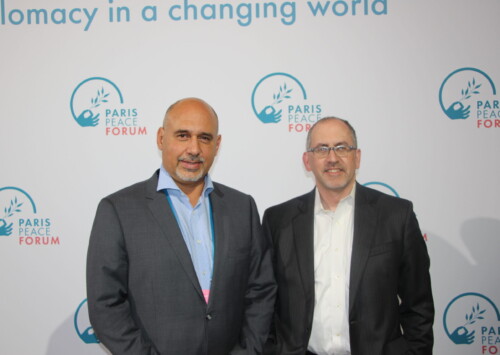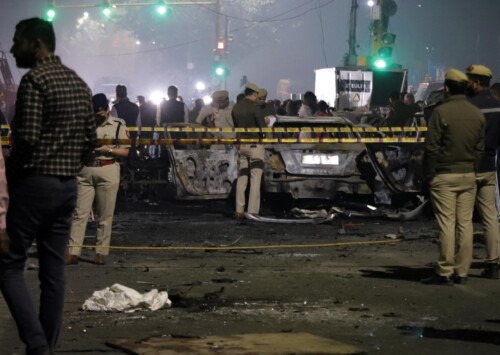Major events propel spiritual tourism in India in 2025
With 21.4 pc rise, faith fuels India’s tourism sector
From Mahakumbh to the inauguration of Ram Mandir, major events drove spiritual tourism across India to new highs, boosting domestic tourism in 2025. With over 400,000 religious or spiritual sites across the entire country, India & You lists some of the key destinations that have boosted spiritual tourism this year.
In India, a land deeply rooted in faith, heritage, and spirituality and home to more than 400,000 religious and cultural heritage sites, spiritual tourism has always been by far the biggest component of domestic tourism and has a significant influence on the overall performance of the tourism sector.
And thanks to major events occurring in the current year, spiritual tourism or pilgrimages in India registered a major growth of 21.4 pc, according to news reports, boosting the overall domestic tourism sector.
According to recent reports by MakeMyTrip, an Online Travel Agency (OTA), more than 50 major religious destinations from Katra and Prayagraj to Varanasi, Ayodhya and Amritsar witnessed a record-breaking surge in 2025. These numbers reflect not only the expanding reach of domestic travel but also the continued importance of spirituality as a cornerstone of Indian life.
Pilgrimage journeys, long associated with devotion and discipline, have now evolved into collective experiences that blend faith, culture and community.
Also read: From fields to festivals: India’s vibrant harvest festivals
Interestingly, the pattern of spiritual travel remains purpose-driven and concise. Over 50 pc of travellers opt for single-night visits, while 31 pc extend their stay to two nights and just 11 pc spend three nights or more. This trend reveals the focussed nature of pilgrimage trips, where the spiritual objective often outweighs leisure considerations. Additionally, group bookings have taken centre stage, underscoring the collective spirit of these journeys. Families, friends and communities often travel together, reaffirming the idea that spirituality in India is a shared and social experience rather than a solitary pursuit
Mahakumbh, Prayagraj
Held every 12 years on the confluence of the Ganga and Yamuna rivers in Allahabad, also known as Prayagraj, the Mahakumbh is by far the largest human gathering in the world and a profound expression of Hindu faith. Celebrated in rotation every three years across four cities, Prayagraj, Haridwar, Nashik and Ujjain, the Mahakumbh at Prayagraj marks the most significant of these cycles.
Devotees gather here to take a holy dip in the river, believing that the ritual cleanses them of sins and brings them closer to moksha, or spiritual liberation. The most recent Mahakumbh, held from January 13 to February 26, drew tens of millions of pilgrims over six weeks including devotees, saints and visitors from across India and beyond, reaffirming its place as one of humanity’s most extraordinary spiritual congregations.
Vaishno Devi, Katra
Further north, nestled in the Trikuta Hills of the Siwalik range between the Yamuna and Chenab rivers, lies the revered shrine of Vaishno Devi in Katra. Dedicated to Goddess Vaishno Devi, this sacred site is among the most visited in India, known for the powerful aura that envelops the 13 km trek leading to the temple.
The site draws over seven million pilgrims annually and the numbers have increased significantly over the years due to significant infrastructural development, including improved civic amenities, scenic viewpoints and enhanced accessibility. The journey to the shrine, undertaken on foot, by pony or via cable car, is seen as both a physical and spiritual ascent, symbolising devotion, perseverance and faith.
For many, the pilgrimage to Vaishno Devi is not just a religious obligation but a deeply emotional experience, a shared journey of prayers, chants and collective belief that transcends individual identity.
Ram Mandir, Ayodhya
Among the destinations leading this resurgence, Ayodhya stands as a symbol of faith and revival. Widely believed to be the birthplace of Lord Rama, Ayodhya has long been regarded as one of India’s most sacred sites. The recent inauguration of the Ram Mandir has not only transformed the city’s skyline but also given an unprecedented boost to pilgrim tourism across the country.
As per news reports, the city alone attracted over 20 million tourists which highlights how spirituality can drive both cultural and economic rejuvenation. Experts believe this growth trajectory is only set to intensify in the coming months, as the temple cements its place as a focal point for religious tourism and national heritage.
The temple’s intricate architecture, spiritual atmosphere and modern infrastructure have collectively positioned Ayodhya as not merely a pilgrimage site but a destination embodying India’s evolving cultural identity, one that honours ancient faith while embracing contemporary progress.
Varanasi
Varanasi, also known as Kashi, is one of the oldest living cities in the world. Hindus have believed since ages that one who dies in the holy land of this city attains salvation and freedom from the cycle of birth and re-birth.
The city on the banks of River Ganga is said to have origins in the tresses of Lord Shiva and is believed to have the power to wash away the sins of mortals.
According to a report by the Ministry of Tourism, the city which is one of the major points of pilgrim tourism in the country attracted over a million foreign tourists in the first quarter of 2025 and saw a 18.7 pc rise in the tourist count from 2024.
Among the many celebrated traditions in the city, the festival of Dev Deepawali stands out as a spectacular expression of devotion and light.
Rooted in an 18th-century practice initiated by the Maratha queen of Indore, Dev Deepawali is observed on Kartik Purnima, 15 days after Diwali. On this night, the ghats of Varanasi come alive with millions of earthen lamps, illuminating the river in a golden glow that mirrors the heavens. The grand Ganga Aarti, accompanied by the rhythmic chanting of mantras, camphor flames and floral offerings, creates an atmosphere of profound reverence and beauty.
The sight of countless diyas or lamps, floating along the river, their reflections shimmering under the moonlit sky, remains etched in the hearts of all who witness it has attracted several tourists and locals over the years.
For many, Dev Deepawali represents more than a festival, it is a spiritual communion that bridges mythology, history and faith.
Golden Temple, Amritsar
Shri Darbar Sahib, Amritsar, popularly known as the Golden Temple, remains one of the most revered and visited religious sites in India. While it stands at the heart of Sikh faith and devotion, the temple also serves as a universal symbol of human unity and equality. Open to all, regardless of caste, creed or race, it offers visitors a space for spiritual reflection and inner peace.
In 2025, the sacred shrine was visited by about a million visitors every day, bringing the annual footfall to more than 30 million visitors, a testament to its enduring spiritual significance and global appeal.
Khwaja Garib Nawaz Dargah, Ajmer
In the heart of Rajasthan, the Khwaja Garib Nawaz Dargah in Ajmer stands as one of India’s holiest Muslim shrines. Resting at the foot of an 250 m-high hill, this architectural gem was constructed in the 15th century and enshrines the tomb of the revered Sufi saint Khwaja Moinuddin Chishti.
The Dargah’s sanctity transcends religious boundaries, drawing devotees from all faiths who come to seek peace, blessings and healing. Its significance flourished under the reign of Emperor Akbar, who famously visited the shrine barefoot to offer prayers. Today, it continues to attract a diverse blend of pilgrims and tourists alike, from those seeking spiritual solace to those fascinated by the rich tapestry of Indo-Islamic architecture and Sufi music.
During the Urs festival, which marks the saint’s death anniversary,held during the first six days of the Islamic lunar month of Rajab , the Dargah transforms into a hub of devotion and celebration. Qawwali sessions echo through the courtyards, filling the air with melodies of love and divine longing. It is this universal spirit of inclusivity that makes Ajmer Sharif not just a site of pilgrimage, but a symbol of India’s pluralistic ethos.
Also read: Discover India’s hidden gems with the cleanest air and rich culture
From the Himalayan foothills to the banks of the Ganga and the deserts of Rajasthan, India’s pilgrim tourism reflects the profound relationship between travel and transcendence. Each journey, whether to a temple, a shrine or a sacred festival, becomes an exploration of faith, community and identity.
As millions continue to embark on these spiritual odysseys, the country’s religious landscape stands as a living testament to its unity in diversity. Beyond numbers and records, pilgrimage in India remains a deeply human story, one of devotion, discovery and the enduring power of belief.m










